Los Angeles Aqueduct in Whitney Canyons
Repeating a lot of what I wrote about the aqueduct on the Elsmere Canyon page - the Los Angeles Aqueduct was started in 1908 and finished in 1913 at a cost of about $23 million. It diverts eastern Sierra mountain streams from the Owens Valley to reservoirs in the metro Los Angeles area. When it was completed, the Los Angeles Aqueduct was the largest single
water project in the world. Since the Owens Valley is higher than Los Angeles, the water would almost always be flowing downhill.
This would enable gravity to power its entire 233 mile length. However, in order to flow through valleys, it would have to travel uphill.
To accomplish this, the water was contained in steel pipes above ground or concrete pipes below ground. The pressure developed
in the down slope forces (siphons) the water through the up slope. It is underground in Whitney (siphon No. 20) and Elsmere Canyons (siphon No. 21). Tunnel 103 connected Whitney and Elsmere Canyons.
Whitney Canyon construction started in 1910. The section of the aqueduct through Whitney and Elsmere Canyons is noteworthy for its use of concrete in the siphon rather than the more usual riveted steel construction. When it can be used, concrete pipes are about 3$ a foot cheaper than steel pipe. The first concrete pipes filled with water were in Whitney and Elsmere Canyon.
From the Sixth Annual Report of the Bureau of the Los Angeles Aqueduct (July 1911):
The Whitney Siphon is a reinforced concrete pipe 10 feet in diameter, with an 8-in shell on the top and sides, and rests on a broad concrete base. The pipe was cast in position. The reinforcing steel consists of half-inch circular iron rods so spaced as to give a factor of safety of four on the steel. It is probable, however, that the concrete alone has sufficient strength to resist the bursting pressure, as the mixture was made very rich to obtain both watertightness and strength. Two expansion joints were put in this pipe. They are of the "Z" type and coated with asphalt paint. The only apparent leakage that has occurred at any place in the pipe is at one of these joints. In the Elsmere Siphon, which was built subsequently, no expansion joints were used. As far as known, in diameter these are the largest reinforced concrete pipes in the United States, but larger ones have been built in Spain.
From the Complete Report on the Construction of the Los Angeles Aqueduct (1916):
In the case of the Whitney siphon, when the pipe was filled, the leakage was at a rate of about 4,000 gallons per day. The expansion joints were then cut out and plugged with cement. Three months afterwards the leakage had dropped 320 gallons per day. This measurement was made volumetrically, as no water was admitted to the pipe during the test. The heads ranged from 60 to 70 feet.
The historic pictures (which are NOT in the public domain and are used by permission) were taken by Joseph Barlow Lippincott, an assistant chief engineer for the project. The chief engineer was William Mulholland.
Much more aqueduct information can be found on the internet.

Cross section of concrete pipe used on the aqueduct (from the Final Report). The same plan was used on all concrete pipes.
The following magazine article was in "Engineering & Contracting: Devoted to the Economics of Civil Engineering Design and to Methods and Cost of Construction", Volume XXXVIII, July-December, 1912, Myron C. Clark Publishing Co. Titled "Methods and Costs of Reinforced Concrete Siphon Construction on the Los Angeles Aqueduct" it was written by D. L. Reaburn and described the construction of the Whitney and South Antelope Siphons.



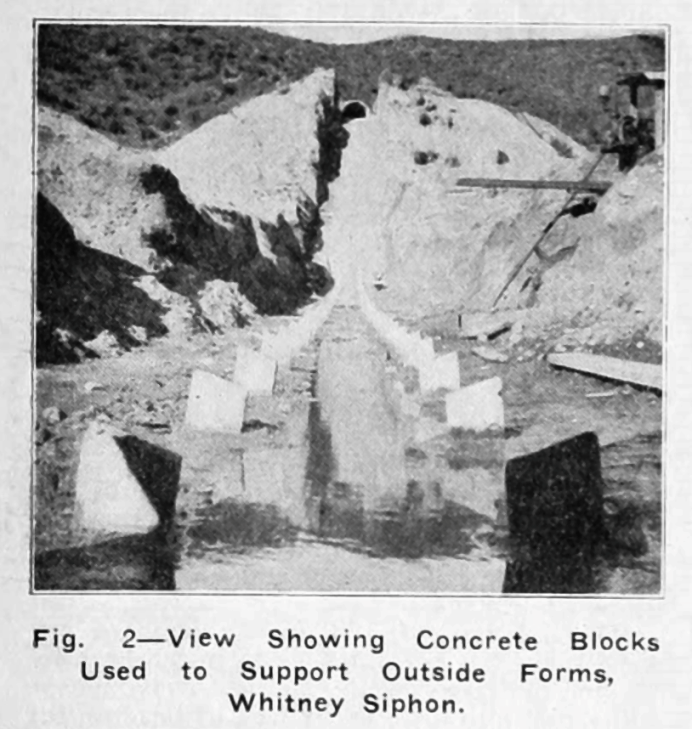
From the Engineering and Contracting magazine of July 3, 1912
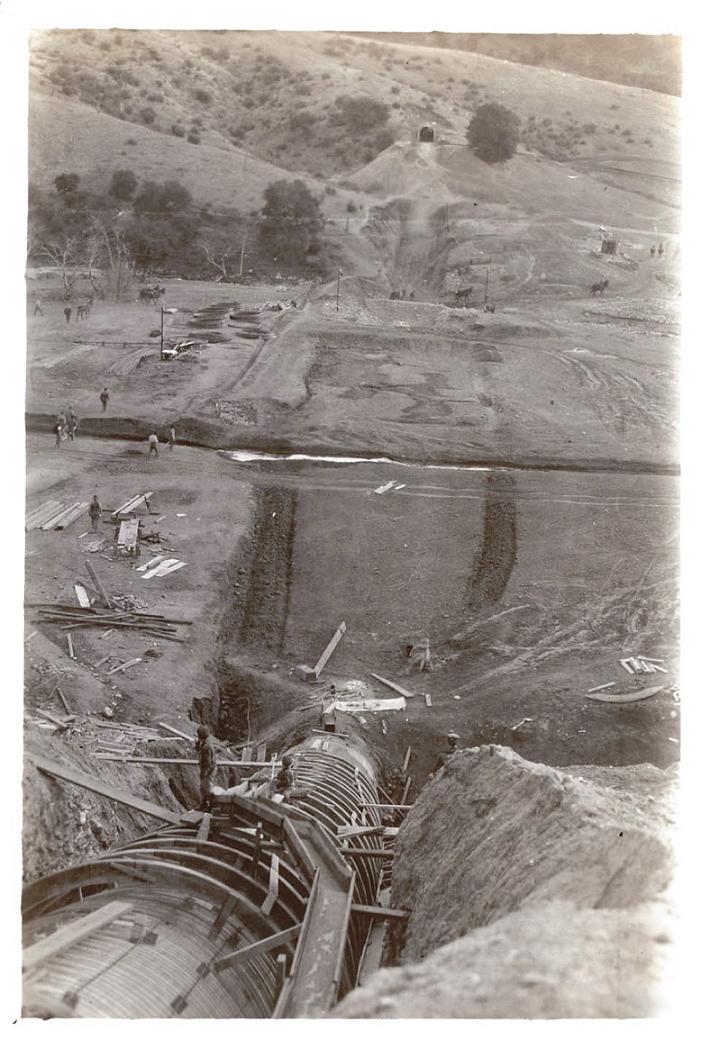
Title: "General view of Whitney Canyon" (1909). Looking south - the next canyon over is Elsmere Canyon
Source: Lippincott Collection, Water Resources Center Archives - University of California, Berkeley
Copyright Note: This image is not in the public domain and is protected by the copyright laws of the United States.
Used by permission of the University of California, Berkeley, Regents.
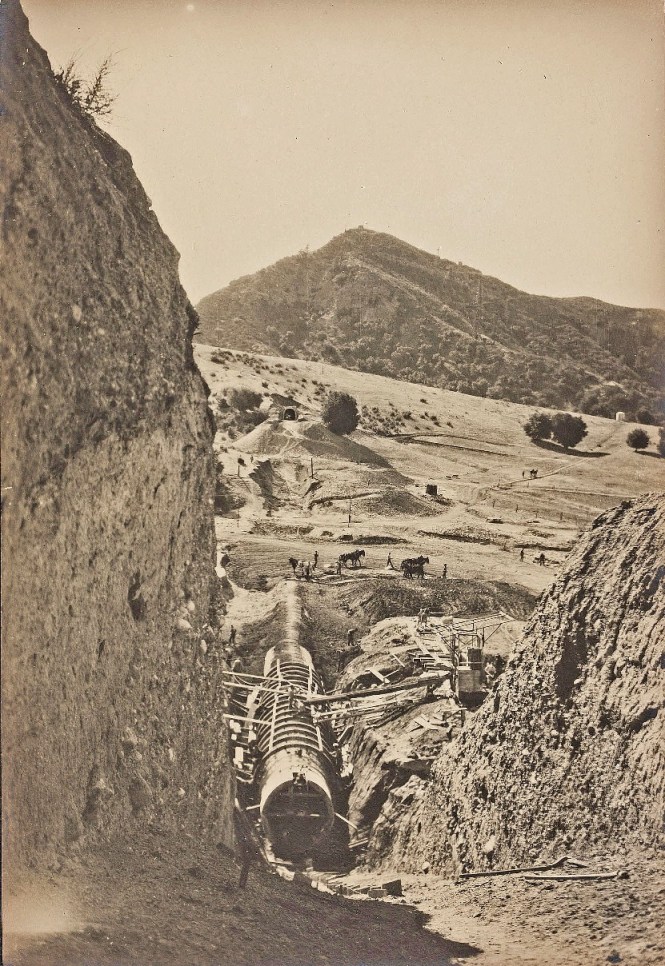
Another general view toward the south showing Elsmere Ridge in the background
Copyright Note: This image is not in the public domain and is protected by the copyright laws of the United States.
Courtesy of the Robert B. and William R. Moran papers. Mss 282, Department of Special Collections, University Libraries, University of California, Santa Barbara.
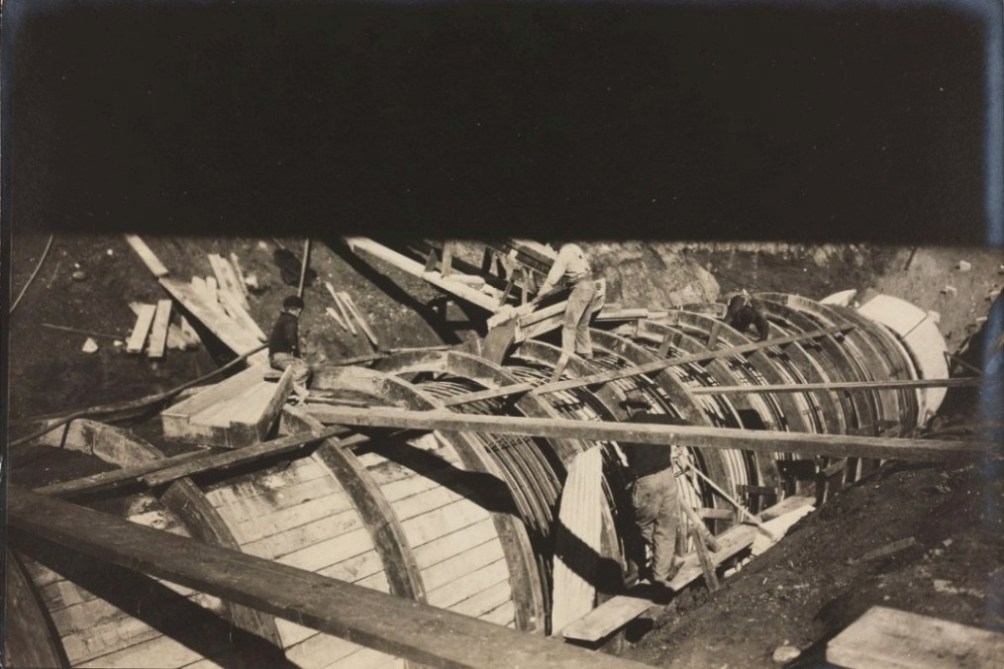
Looking down on the aqueduct pipe in the previous photo. On the right hand side is where it starts to climb up.
Copyright Note: This image is not in the public domain and is protected by the copyright laws of the United States.
Courtesy of the Robert B. and William R. Moran papers. Mss 282, Department of Special Collections, University Libraries, University of California, Santa Barbara.
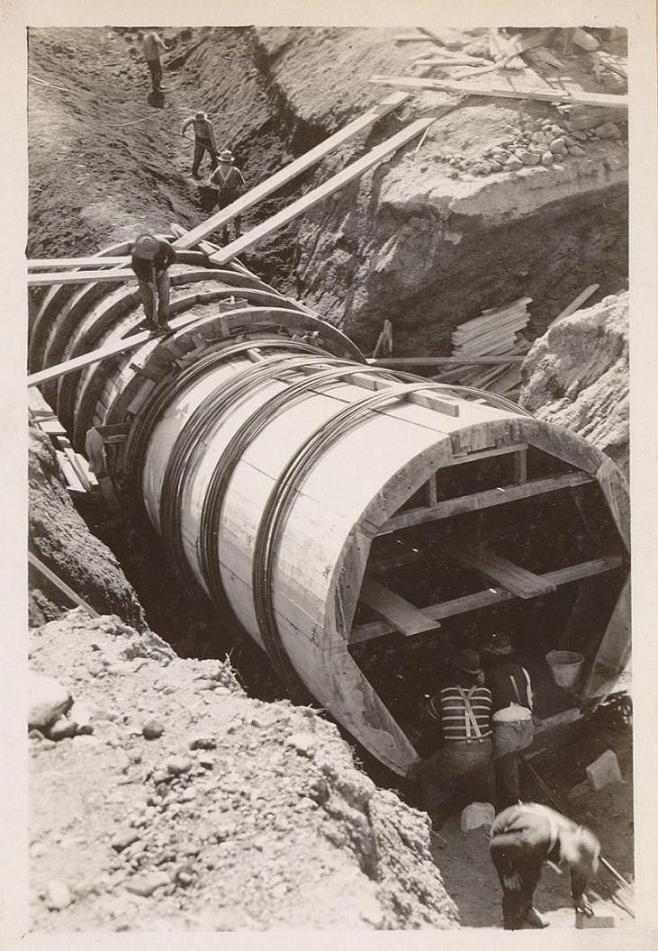
Title: "Whitney siphon - Saugus Division" (1909)
Source: Lippincott Collection, Water Resources Center Archives - University of California, Berkeley
Copyright Note: This image is not in the public domain and is protected by the copyright laws of the United States.
Used by permission of the University of California, Berkeley, Regents.
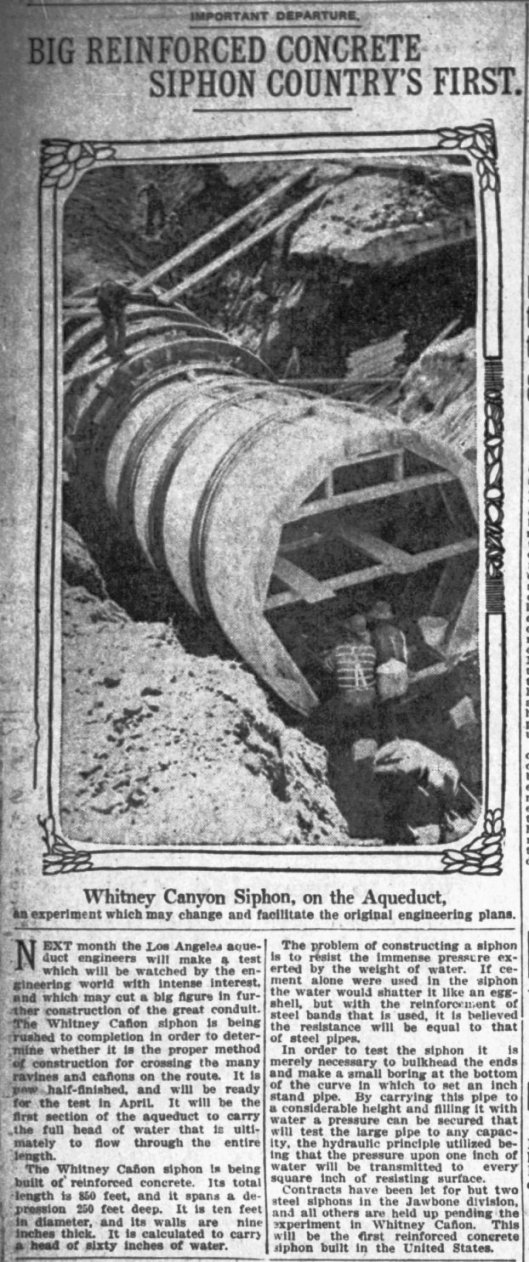
From the Los Angeles Times of 3/13/1910. They used the above photo.
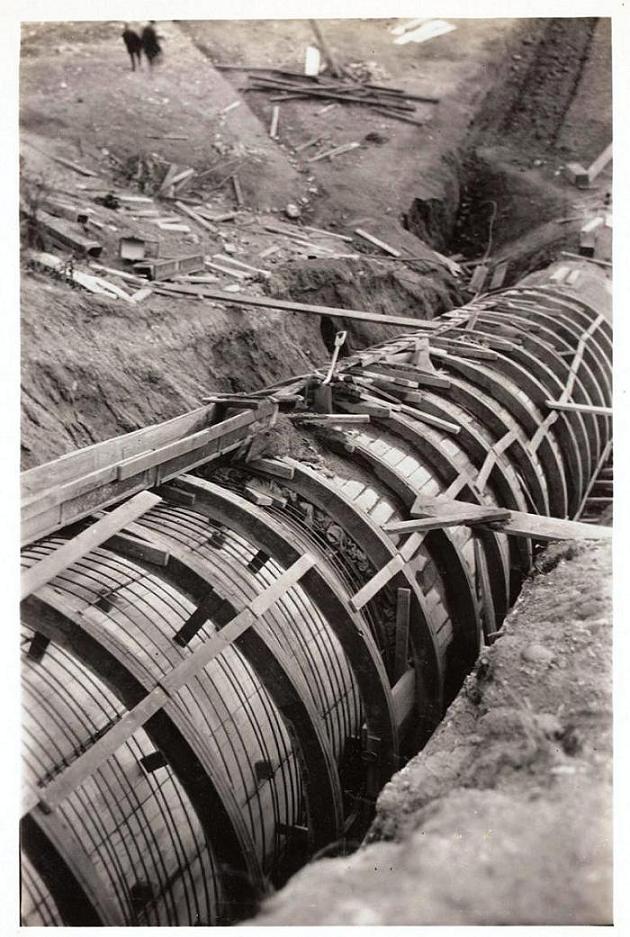
Title: "Whitney siphon - Saugus Division" (1909)
Source: Lippincott Collection, Water Resources Center Archives - University of California, Berkeley
Copyright Note: This image is not in the public domain and is protected by the copyright laws of the United States.
Used by permission of the University of California, Berkeley, Regents.
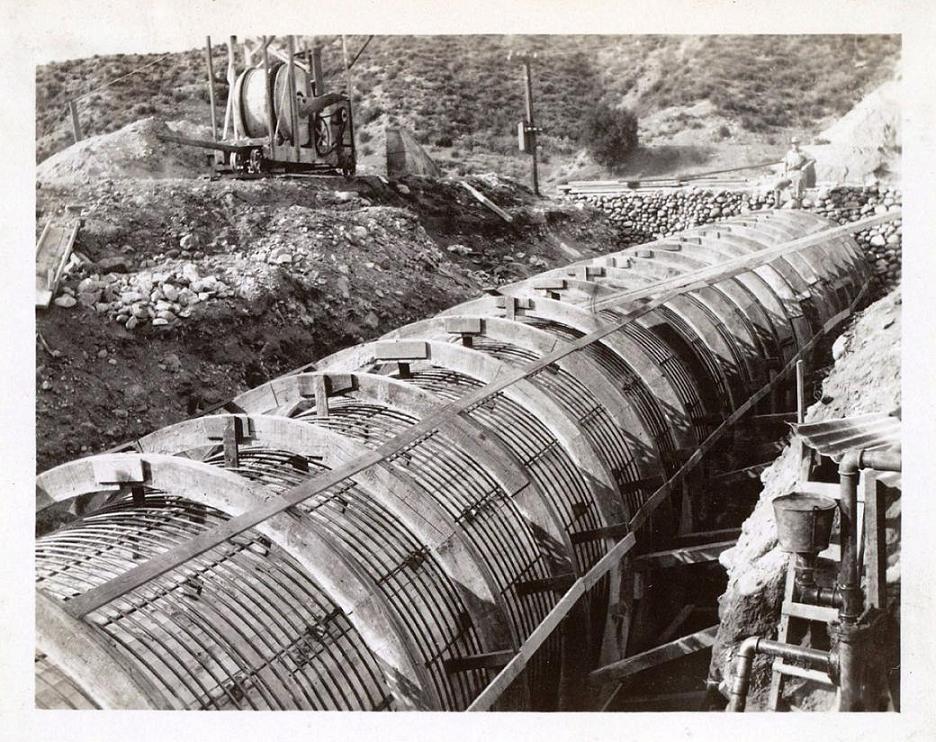
Title: "Whitney siphon - Saugus Division" (1909)
Source: Lippincott Collection, Water Resources Center Archives - University of California, Berkeley
Copyright Note: This image is not in the public domain and is protected by the copyright laws of the United States.
Used by permission of the University of California, Berkeley, Regents.
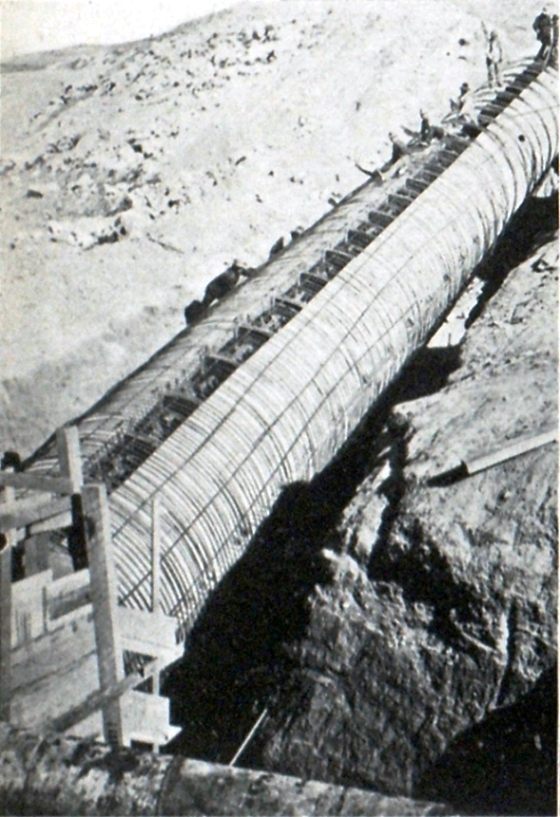
From "The Near Completion of the Los Angeles Aqueduct" by Burt A. Heinly in Fire and Water Engineering magazine of 5/29/1912.
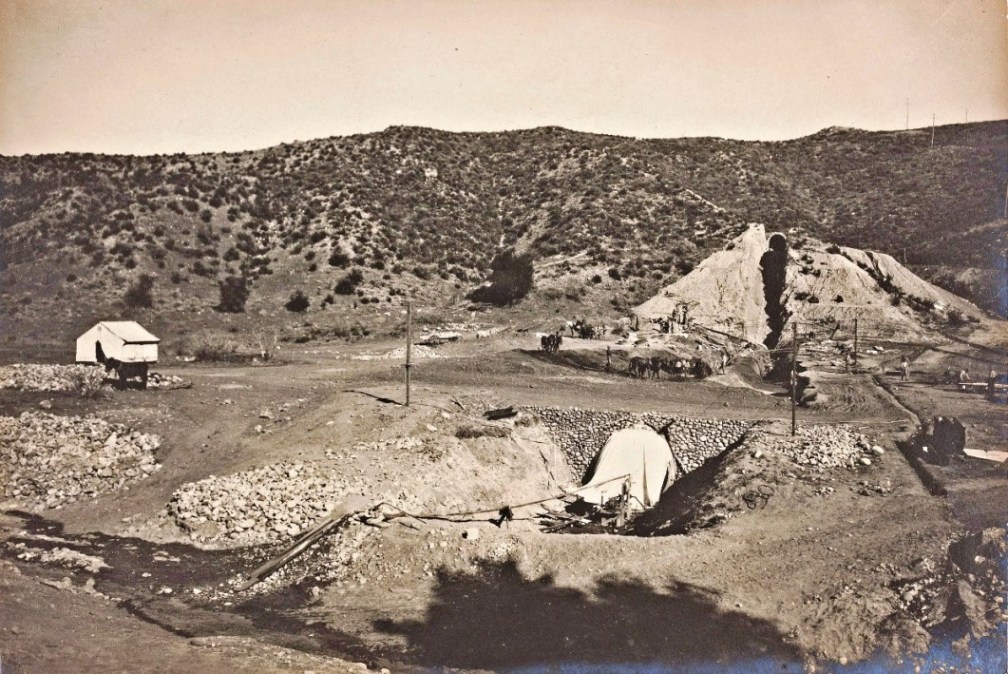
General view of Whitney Canyon toward the north
Copyright Note: This image is not in the public domain and is protected by the copyright laws of the United States.
Courtesy of the Robert B. and William R. Moran papers. Mss 282, Department of Special Collections, University Libraries, University of California, Santa Barbara.
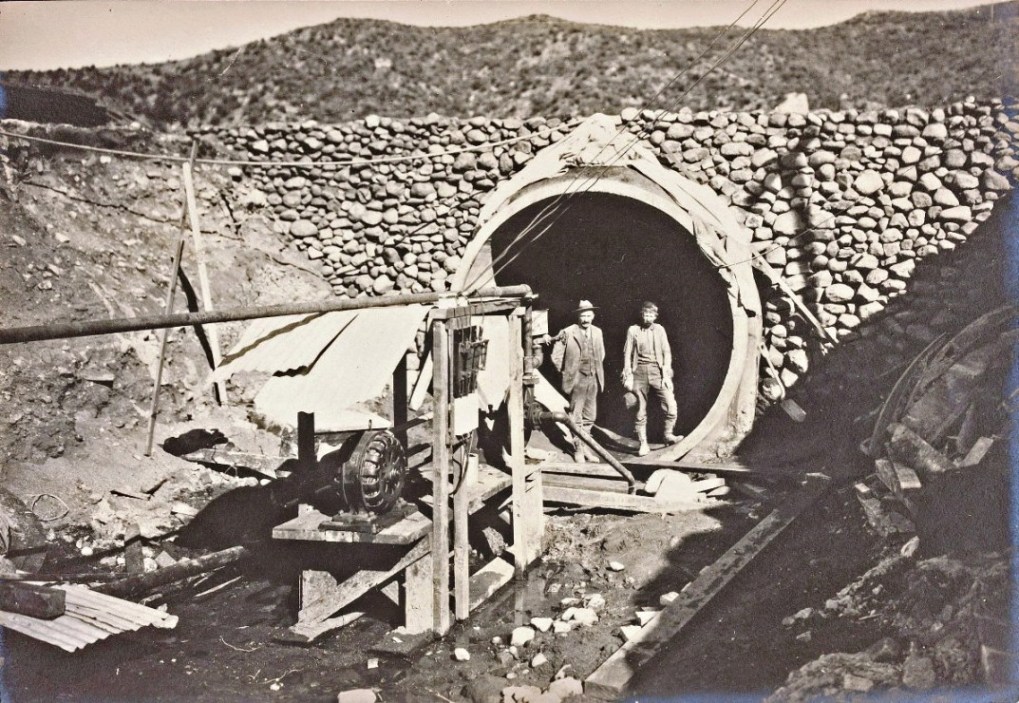
Close up of Whitney siphon (view toward north)
Copyright Note: This image is not in the public domain and is protected by the copyright laws of the United States.
Courtesy of the Robert B. and William R. Moran papers. Mss 282, Department of Special Collections, University Libraries, University of California, Santa Barbara.
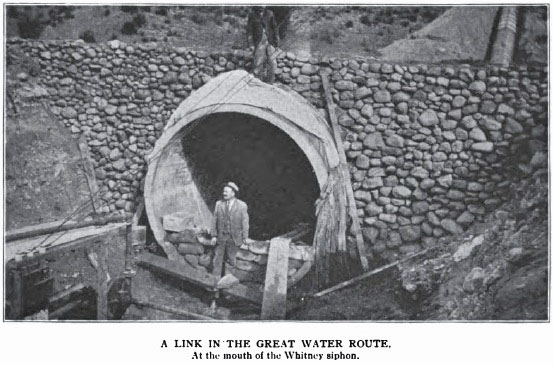
From "A Long Look For Water" by Charlton Edholm in "The Technical World Magazine" of May, 1910
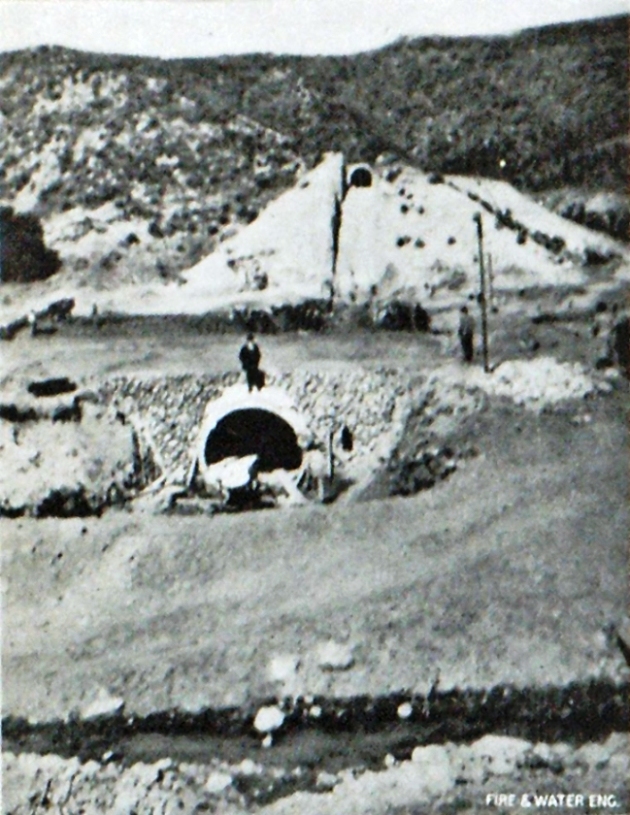
From "The Near Completion of the Los Angeles Aqueduct" by Burt A. Heinly in Fire and Water Engineering magazine of 5/29/1912.
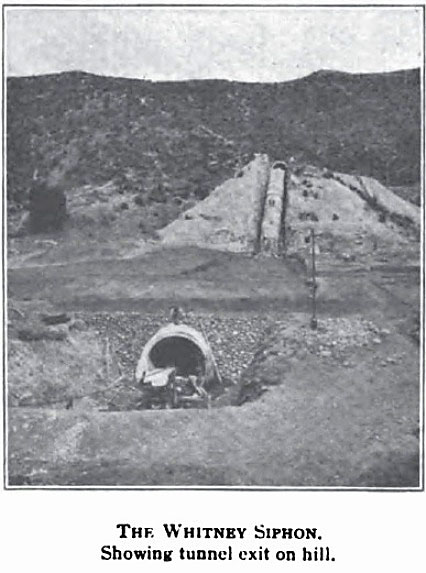
Also from "A Long Look For Water"
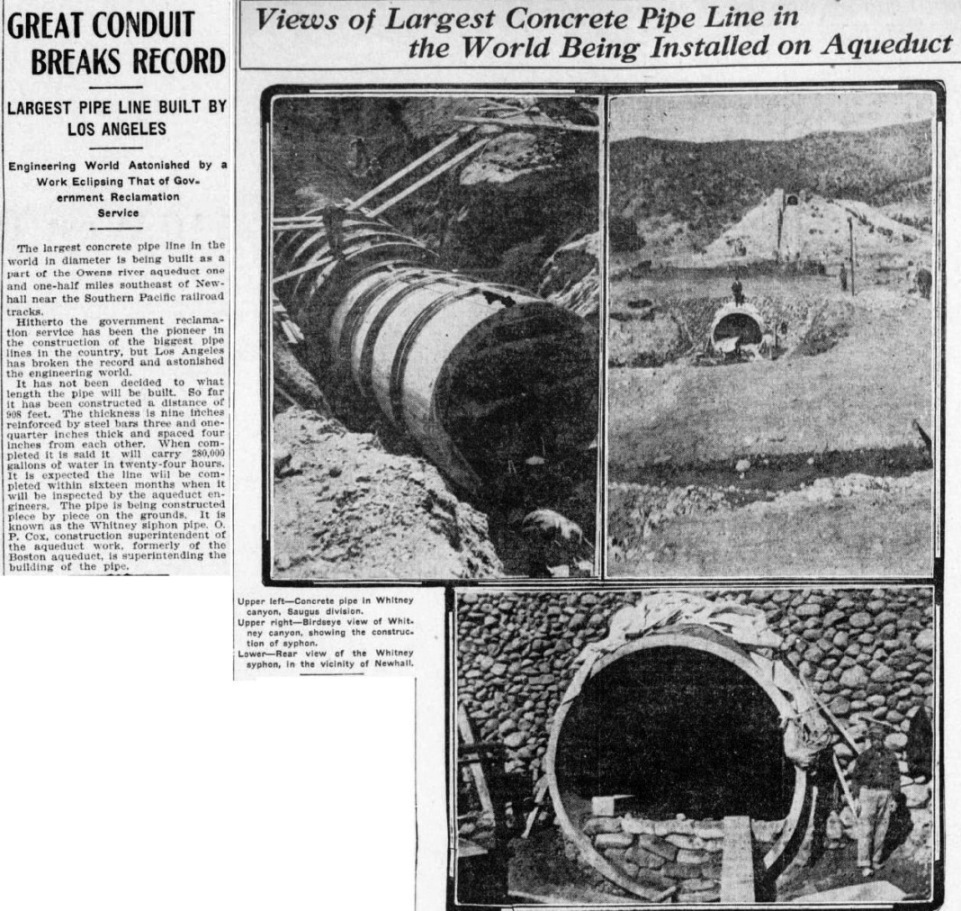
From the Los Angeles Herald of 2/11/1910
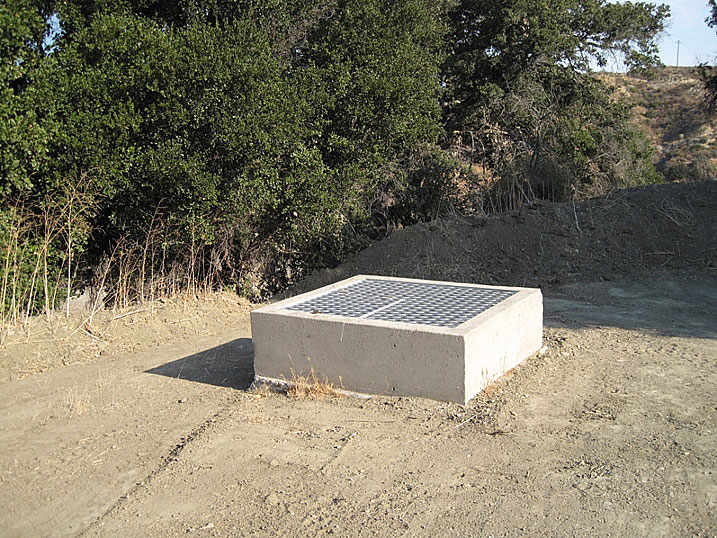
This aqueduct vent is on the south side of the canyon (Photo taken on 9/4/2009)
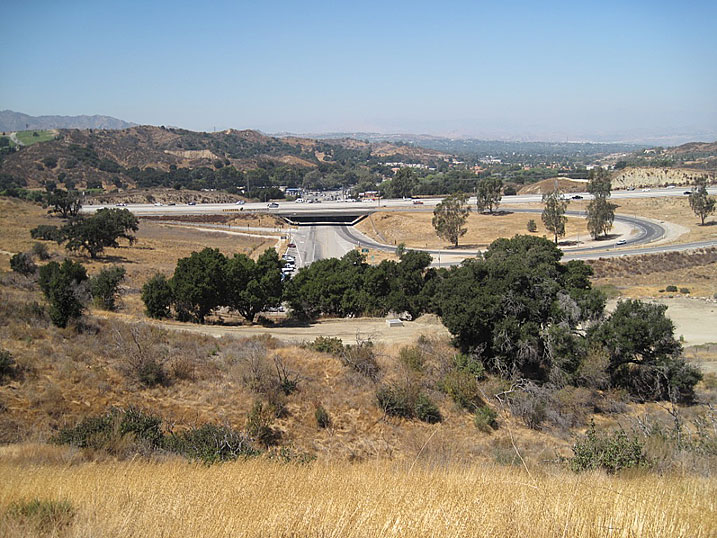
Same vent as above from further away showing the freeway (9/4/2009)
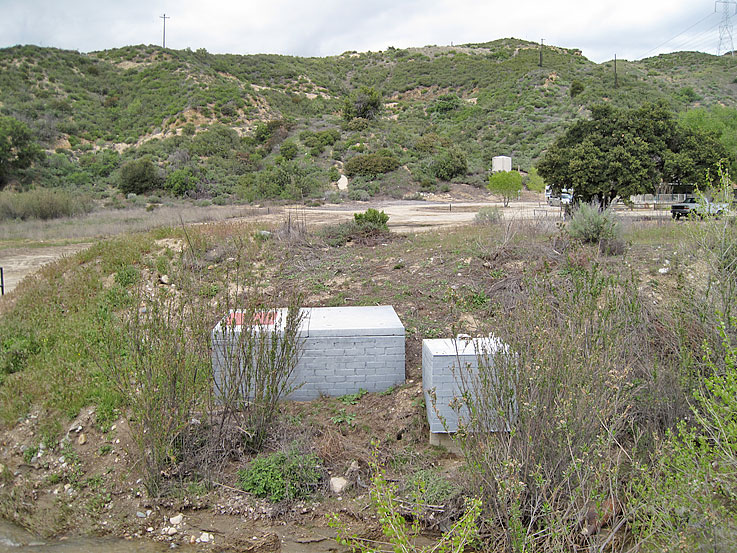
Aqueduct access in the creek bed next to the bridge. In the distance you can see the concrete aqueduct as it begins to go up the hill. To the right is the MRCA ranger's house. (9/4/2009)






















